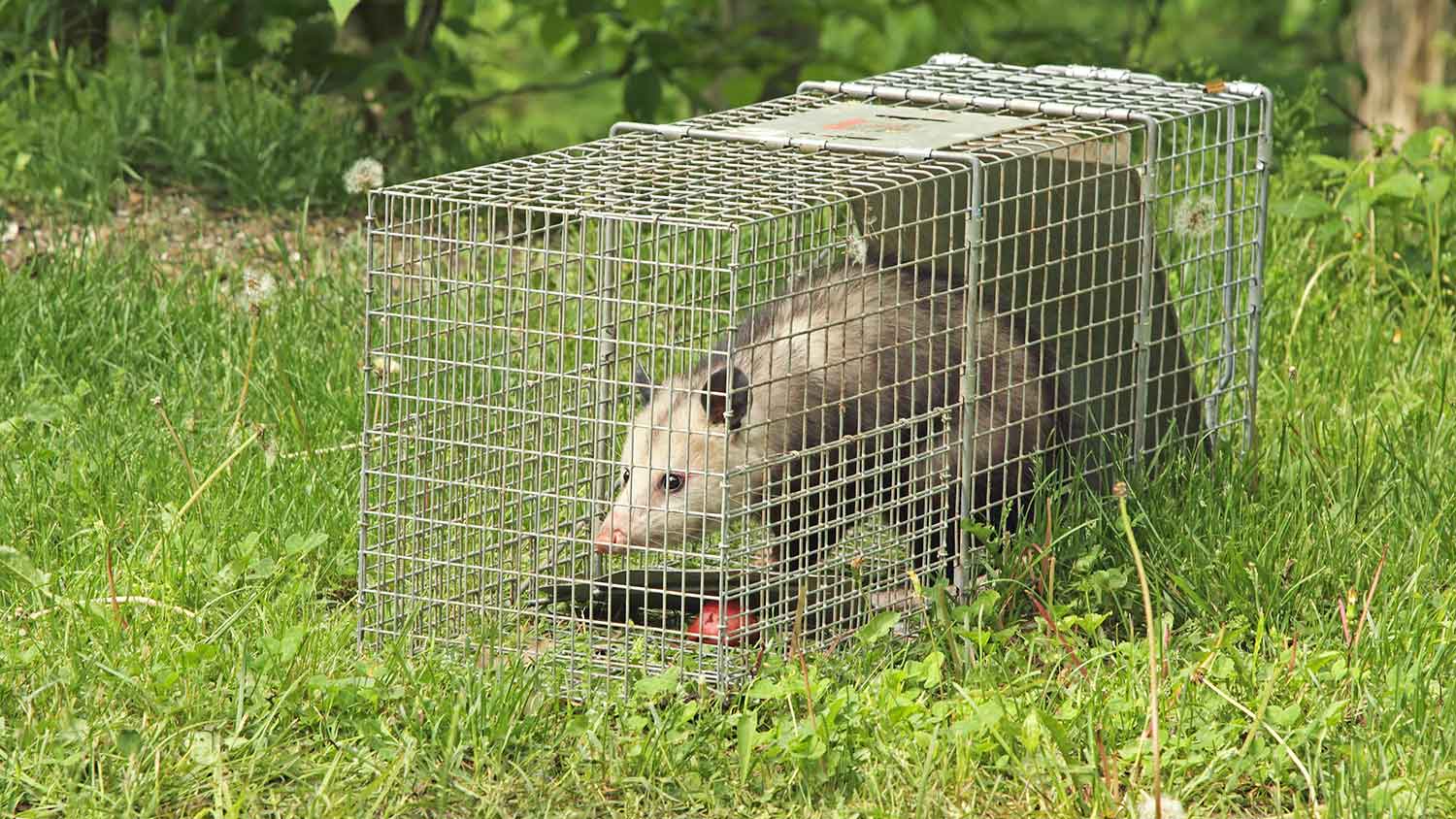
When calculating wildlife removal costs, you’ll need to consider the type, size, and amount of animals. Our guide will show you the wildlife removal cost.
These experts will send those critters packing


Possums can be both advantageous and troublesome. On the positive side, they help manage pests and reduce the tick population. However, possums can carry diseases like leptospirosis and tuberculosis, and their scavenging habits can damage property. If your property is suffering from these nocturnal visitors, here's who to call for possum removal.
When getting rid of possums, turning to a professional possum removal service is your safest bet. These experts have the skills, tools, and understanding of local laws to address the problem quickly and humanely. The cost of wildlife removal can differ, but expect to pay anywhere from $150 to $350 to remove possums.
Homeowners should avoid handling possums. Although possums are typically timid and not aggressive, they’ll lose their cool when cornered, and their bites or scratches can carry bacteria that may lead to infections.
Additionally, in many states, it's illegal for homeowners to trap and relocate wildlife without proper authorization. Professionals have the expertise to handle possum removal safely, humanely, and by local guidelines—plus, they can provide insights on long-term deterrents to keep these creatures from returning.
Never try to kill a possum—this is not only an illegal practice in many states but also inhumane and unnecessary.

City or county-operated animal control services can help with possum removal, usually at no cost and in compliance with legal safety standards. However, you can’t always count on these services outside of an emergency.
Due to limited resources, response times may not be swift, and they may only respond to severe cases of infestation or when there is evidence of a rabid or diseased animal. Furthermore, some local animal services do not handle all types of wildlife, so possums could be outside their scope in your area.
Animal control doesn't provide prevention strategies to keep these critters from returning or assist with exclusion techniques—they remove the animal, and the rest is up to you.
It's important to note that transporting and releasing possums is illegal in most states. Relocated animals often struggle to survive and may cause new problems in the release areas.
Many professionals start possum removal by thoroughly assessing the situation, identifying the possum's entry points, and determining the extent of the problem. They also collaborate with homeowners to eliminate food sources by securing trash cans, keeping pet food indoors, and removing fallen fruit.
Afterward, wildlife experts work with homeowners to seal entry points and offer advice on making the property less attractive to possums. This process includes installing fencing with wire mesh to keep possums out of gardens and yards and trimming tree branches that might provide access to roofs.
Did a great job at removing the stump. Was very kind and respectful.
I used Richard and his team @ “Tree Take Down” LLC, earlier this spring ( May). After meeting with him & showing him the tree, which I wanted to remove. He advise me that it needed to be removed by climbing it, and remove it from the top down. He had a skilled “climber” on his team and...
I recently had the pleasure of working with Bert from Pro star and I can’t recommend him high enough. He was professional, considerate, and incredibly informative about what I needed to do to have my belongings removed. Bert did not only help me identify items that needed to be removed, but...
Old Attic insulation was removed and replaced
I got my medium size magnolia tree and box bushes removed. Very friendly and professional. They were quick and cleaned up everything. All my neighbors in the cul de sac ended up using them after they saw the work they did in my yard. I also recommended them to a friend and she was happy with...
Just do it! My house is so fresh and clean. I am amazed by the quality and speed of the service. 10/10 recommend. Thank you so much for taking a huge task off my plate, I am so thankful!
Prompt and treated me like family
on time Correct tools Courteous New the job well Dependable Job well done. Three critters were removed
These folks are light years ahead of anything I've ever seen before. They are extremely professional and safety cautious. They removed a giant tree from between two houses and never touched either home. A total of three trees were removed and three others trimmed. Three stumps and exposed...
Quality of work is excellent. Removed large holly tree and several large shrubs from our back yard. They were quick and respectful of surrounding landscaping. The crew was great. I would recommend them to anyone.
From average costs to expert advice, get all the answers you need to get your job done.

When calculating wildlife removal costs, you’ll need to consider the type, size, and amount of animals. Our guide will show you the wildlife removal cost.

When budgeting for possum removal costs, consider number of animals, location, method of removal, and whether you do it yourself or hire a professional.

When calculating fox removal costs, factor in whether you take a DIY approach or call in the pros, the number of animals involved, and the location.

Hawks are expert overhead hunters. To protect your pets and the little birds visiting your backyard, learn how to keep hawks away with these humane strategies.

Uncover the subterranean showdown in your yard: Voles vs. Moles. Explore what to know about their differences, behaviors, and destructive habits.

If you're stumped about what animal is digging holes in your yard, use this guide to identify the signs of different species and stop them from causing damage.